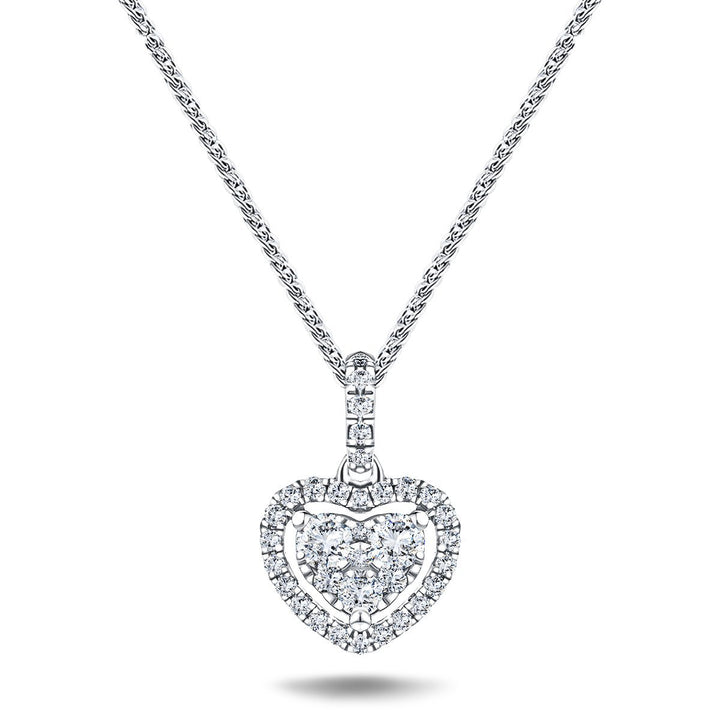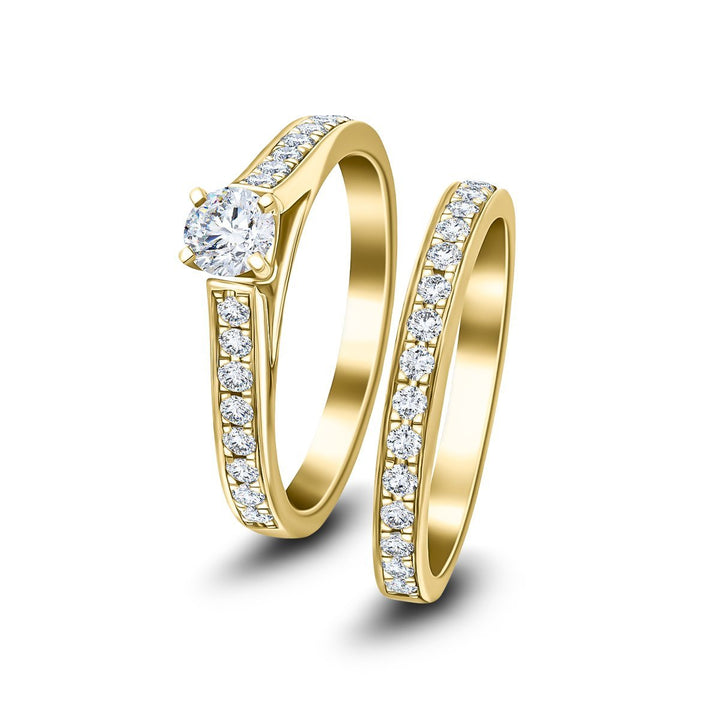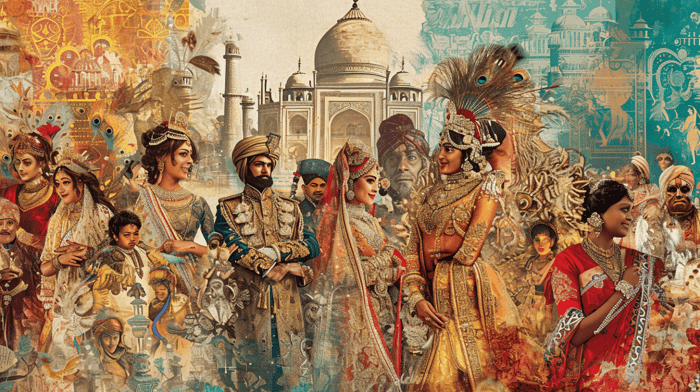From their discovery in India to their role in modern technologies, diamonds have a rich history and diverse applications. This blog post explores the history of diamonds and their significance in various industries.
The British Fascination with Indian Diamonds
Diamonds have long been admired for their beauty and rarity. But did you know that they were first discovered in India? These precious gemstones captivated the British with their allure, leading to a fascination that would shape the global diamond market. In this blog post, we will explore the British fascination with Indian diamonds and the impact they had on the trade and perception of these magnificent gems.
Diamonds: Symbols of Wealth and Power
The British valued diamonds not only for their sheer beauty but also as symbols of wealth and power. These precious gemstones were seen as luxurious and extravagant, fitting for the elite and royalty. Their brilliance and rarity made them highly coveted, and they quickly became a status symbol among the British aristocracy.
As diamonds were scarce in Britain, the allure of Indian diamonds grew exponentially. The British were captivated by the magnificence of these gemstones, which were said to possess a unique sparkle and an unrivalled brilliance. They became a must-have for the wealthy and influential, further fueling the demand for Indian diamonds.
$1,525.00
Want to add a little extra sparkle to your ring? Look no further! This art deco cushion cut yellow diamond ring is perfect for any occasion. With a white diamond halo made from round and baguette-shaped gemstones around the cushion… read moreArt Deco Cushion Yellow Diamond 0.65ct Rub Over Ring in 18k Yellow Gold

$2,437.00
Indian Diamonds: Highly Sought After by the British Elite
The British elite, including monarchs and nobles, desired Indian diamonds for their exquisite craftsmanship and exceptional quality. The skilled Indian artisans transformed these precious stones into intricate pieces of jewellery, showcasing their brilliance and enhancing their allure.
Some of the most famous Indian diamonds, such as the Hope Diamond and the Koh-i-Noor, have become legendary in their own right. These gems, with their rich histories and captivating legends, were coveted possessions that symbolized power, prestige, and opulence.
The Role of the British East India Company in the Diamond Trade
The British East India Company played a significant role in the trade of Indian diamonds. Founded in 1600, the company established a presence in India and gained control over various regions rich in diamond mines.
With their extensive network and resources, the British East India Company facilitated the transport and distribution of Indian diamonds to markets across the world. They created a direct link between the diamond mines of India and the elite buyers in Britain, further fueling the British fascination with these captivating gemstones.
The Influence on the Global Diamond Market
The allure of Indian diamonds has had a profound impact on the global diamond market. The British fascination with these gems influenced the perception and value of diamonds worldwide. Indian diamonds became synonymous with luxury and exclusivity, setting the standard for diamond quality and craftsmanship.
Furthermore, the British East India Company's control over the diamond trade gave them a significant advantage in the evolving global market. They were able to dictate prices and monopolize the supply, further solidifying their dominance in the diamond industry.
The British fascination with Indian diamonds is a testament to the enduring allure and power of these gemstones. Their beauty, rarity, and association with wealth and power captivated the British elite and influenced the global diamond market. Today, the legacy of this fascination lives on, as diamonds continue to be celebrated for their exceptional beauty and symbolic value.
The Rise of De Beers and Diamond Control
In the world of diamonds, one name has stood above all others for over a century: De Beers. The story of De Beers is a captivating tale of power, control, and strategic marketing that has shaped the diamond industry as we know it today.
Cecil Rhodes and the Establishment of De Beers Mining Company
The discovery of diamonds in South Africa in the late 19th century presented an opportunity for a young businessman by the name of Cecil Rhodes. Rhodes founded the De Beers Mining Company in 1888 and quickly rose to dominate the diamond industry, controlling an astounding 90% of diamond production.
Under Rhodes' leadership, De Beers implemented numerous strategies to solidify its control over the diamond market.
Strategic Marketing Campaigns and Increasing Diamond Demand
Recognizing the need to create a sense of scarcity and desirability around diamonds, De Beers embarked on a series of strategic marketing campaigns. These campaigns aimed to position diamonds as symbols of love, prestige, and eternal commitment.
One of the most successful campaigns was the introduction of the diamond engagement ring. Through carefully crafted advertisements and celebrity endorsements, De Beers popularized the idea that an engagement should be sealed with a diamond ring. This marketing coup ensured a consistent demand for diamonds, particularly engagement rings, which still persists today.
$924.00
The classically romantic heart shape, made with ethically sourced, sparkling diamonds then framed with a diamond halo and set in striking 18k white gold for an eye-catching sparkle and shine. Our UK craftsmen have pride and confidence that this will… read moreHalo Cluster Heart Necklace 0.40ct G/SI Diamond in 18K White Gold

$1,320.00
The Diamond Supply Chain and De Beers' Control
De Beers' diamond control extended beyond marketing. The company meticulously managed the diamond supply chain, from mining to distribution. By maintaining a tight grip on the entire process, De Beers was able to ensure high prices and market dominance.
De Beers strategically controlled the distribution of diamonds by implementing the concept of "sight holders." These select diamond dealers were given privileged access to De Beers' rough diamond stock, effectively limiting supply and giving De Beers the power to dictate prices.
The De Beers Monopoly and Legal Challenges
For many years, De Beers enjoyed a near-monopoly on the diamond market. However, its dominance also attracted significant legal challenges and regulatory scrutiny.
In the 1990s, De Beers faced a series of lawsuits accusing the company of price-fixing and anti-competitive practices. The legal battles forced De Beers to make significant changes to its business practices, including settling a major lawsuit in 2004 that cost the company billions of dollars.
Furthermore, regulatory bodies around the world began to address the ethical concerns associated with the diamond industry, including issues of conflict diamonds and ethical mining practices. The scrutiny of the industry led to the establishment of the Kimberley Process Certification Scheme, aimed at ensuring that diamonds traded globally were free from conflict and human rights abuses.
The rise of De Beers and its control over the diamond industry has left an indelible mark on the world of diamonds. Cecil Rhodes' vision and strategic marketing campaigns forever changed the way we perceive diamonds, making them not just objects of beauty but symbols of love and commitment. While De Beers' monopoly ultimately faced legal challenges and regulatory scrutiny, its influence on the diamond market remains undeniable.
Diamonds in Society and Conflict
Diamonds have long been associated with love, luxury, and beauty. They symbolize commitment and are often seen as a status symbol. However, the history of diamonds is not without its dark side. From funding civil wars to human rights violations, diamonds have been at the centre of controversy and conflict. In this blog post, we will explore the role of diamonds in society and the conflicts they have been involved in.
The Rise of Diamond Engagement Rings
In the 1800s, diamond engagement rings were not as common as they are today. Only a small percentage of American brides had diamond engagement rings. Early in the 20th century, an advertising campaign by the diamond company De Beers popularized the custom of giving a diamond ring as a sign of love and commitment. The campaign, which featured the famous slogan "A Diamond is Forever," successfully transformed diamond rings into a cultural norm.
Conflict Diamonds and Civil Wars
In recent history, diamonds have played a crucial role in funding brutal civil wars, particularly in Sierra Leone. Militia groups in Sierra Leone used diamonds to finance their activities and sustain their armed conflicts. These groups would mine diamonds and sell them on the international market, using the profits to purchase weapons and further their violent campaigns. This illicit trade in diamonds became known as the conflict diamond trade or the blood diamond trade.

The Kimberley Process
In response to the issue of conflict diamond trade, the international community established the Kimberley Process in 2003. The Kimberley Process is a certification scheme that aims to prevent the trade of conflict diamonds. It requires participating countries to implement measures to ensure that diamonds are sourced from conflict-free areas and do not contribute to armed conflict or human rights abuses. This initiative has been successful in curbing the trade of conflict diamonds to a significant extent.
$4,242.00
This finely crafted bangle features a detailed design of the pave set diamonds that sparkles brightly. The intricate design is sure to make a statement with its lovely curves. A timeless piece which will be a staple in any jewellery… read morePave Set Round Diamond Bangle 1.50ct G/SI Diamond in 18k Rose Gold

$6,752.00
Ethical Concerns and Human Rights Violations
Although the Kimberley Process has made progress in reducing the conflict diamond trade, ethical concerns surrounding diamond mining persist. Many diamond mines are located in developing countries, where labour laws and environmental regulations are often lax. This has led to cases of human rights violations and environmental degradation associated with diamond mining. Workers in these mines may face dangerous working conditions and receive inadequate pay. Additionally, the mining process can have detrimental effects on the environment, including deforestation and water pollution.
Promoting Responsible Sourcing and Fair Trade Diamonds
In recent years, there has been a growing effort to promote responsible sourcing and fair trade diamonds. Various organizations and initiatives have emerged to ensure that diamonds are mined and traded in an ethical and sustainable manner. These initiatives aim to improve working conditions for miners, protect the environment, and uphold human rights standards. By purchasing diamonds that have been certified as responsibly sourced or fair trade, consumers can support these efforts and contribute to positive change within the diamond industry.
The history of diamonds is complicated, with both positive and negative aspects. While diamonds continue to hold a special place in society, it is important to be aware of the conflicts and ethical concerns associated with them. The Kimberley Process has made significant progress in combating the conflict diamond trade, but there is still work to be done to ensure ethical practices throughout the diamond industry. By supporting responsible sourcing and fair trade initiatives, we can contribute to a more sustainable and socially responsible diamond industry.
Lab-Grown Diamonds: Revolutionizing Diamond Production
As the technology to create synthetic diamonds has become more widely available, lab-grown diamonds are transforming the diamond industry through an innovative approach to diamond production. The lab-grown diamond industry is disrupting the traditional diamond mining process by offering a sustainable and ethical alternative.
$2,275.00
Lustrous 18k yellow gold and 0.90 carats of hand-cut G/SI quality diamonds combine in both pieces of this matching wedding and engagement ring bridal set to wonderful effect. With the central stone raised precisely, the engagement ring makes a striking… read moreCertified Round Diamond Engagement & Wedding Ring 0.90ct G/SI 18k Yellow Gold

$4,009.00
Embracing Ethical Elegance: Discover the Timeless Beauty of Diamonds with All Diamond
The history of diamonds, from the depths of the earth to the pinnacle of luxury, is a story of beauty, power, and transformation. From the British fascination with Indian diamonds to the strategic dominance of De Beers, and from the sparkle of engagement rings to the ethical challenges of conflict diamonds, these precious gemstones have played a multifaceted role in our history and culture. Today, as we witness the rise of lab-grown diamonds and the increasing focus on ethical sourcing and fair trade, it is clear that the diamond industry continues to evolve.
As we reflect on the rich history and diverse applications of diamonds, it is also an opportunity to celebrate the craftsmanship and beauty of these gems in a responsible and conscious manner.
All Diamond, a British online jeweller, epitomises this blend of tradition and modernity. Specializing in well-priced, fine diamond jewellery using natural gemstones, All Diamond offers a unique opportunity to own a piece of this timeless legacy.
I encourage you to visit All Diamond's online jewellery store to explore their exquisite collection. Whether you are seeking a symbol of love, a testament to tradition, or a commitment to ethical luxury, All Diamond's selection of fine diamond jewellery is sure to captivate and inspire. Embrace the enduring allure of diamonds and be a part of their continuing story by choosing All Diamond jewellery for your next special occasion.




